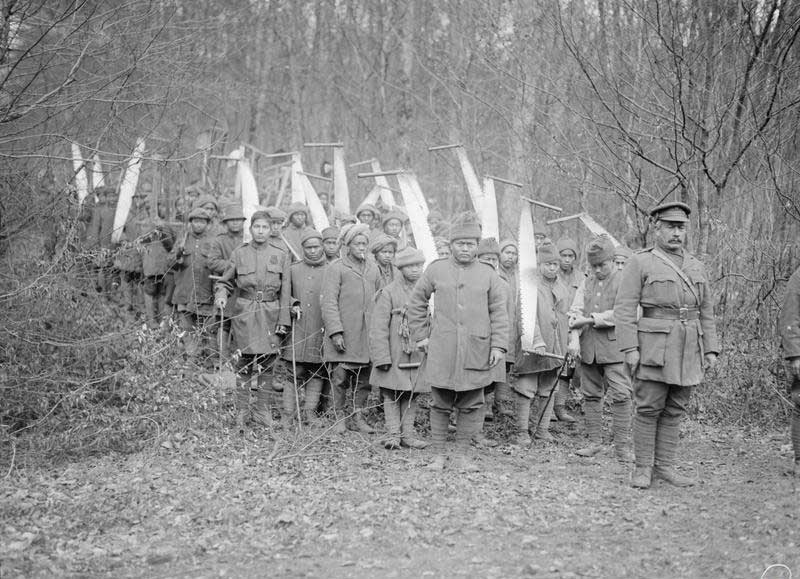The Invisible
The sobering story of the Indian Labour Corps.

The First World War centenary gave us a better understanding of the vast contribution made by the Indian Army to that conflict. The focus, though, was on the soldiers and little was made of the thousands of Indians who travelled to France and Mesopotamia as ‘followers’ and labourers – mule drivers, sweepers, stretcher-bearers, porters and construction workers. Few could write so their story can seem impossible to recover. This gap has now been filled by Radhika Singha, a professor at the Jawaharlal Nehru University in Delhi, who has devoted nearly a decade to researching the Indian Labour Corps (ILC). Her thoughtful, meticulous history is sobering in what it reveals.
Of the 1.4 million Indians recruited up to the end of 1919, 563,369 were non-combatants. Many were from the frontier hill states of Assam, Bihar and Orissa. There were strong inducements to join up: those who volunteered became exempt for life from an onerous house tax and any further labour obligations. For some, the prospect of returning to India with funds to marry may have been attractive. For others there may have been a sense of adventure.
On arrival in Mesopotamia, canals needed to be deepened and extended, roads built and railway lines laid down, all in blistering heat. Singha has mined regional archives, official reports, unit diaries and private accounts to piece together stories of impossibly long hours, punishing journeys on foot to remote worksites and lack of proper equipment and clothing. Lieutenant Maynard Knight, a tea planter commanding a detachment of the 1st Madras Labour Corps, reported that a great number of his men, their hands cut and bruised through work on the Khanikin railway, had ‘no boots at all, and only one blanket a piece’. Desertion was at first punished by flogging, but seeing potential issues, the military instead set up ‘disciplinary camps’ surrounded by barbed wire.
There was at one point an urgent need for sanitation workers and the authorities turned to Indian jails for this dangerously unhygienic work. Prisoners were recruited with ‘suspicious swiftness’. Travelling by train to Bombay, the newly enlisted men of the 5th United Provinces Jail Porter Corps pulled the communication cord no fewer than seven times and by the end of the journey seven of them were missing.
Deployed in France from 1917 onwards, the ILC found the long sea route to Marseilles bewildering and traumatic. Overcrowding led to dysentery and, to the recruits’ great distress, some of their companions had to be buried at sea. The labourers were put to work clearing the battlefields of the Western Front. Lord Ampthill, former Governor of Madras, wondered how men ‘from the hills and jungles, who have barely emerged from barbarism’ would shape up as labour. Not long after, Ampthill was admitting to a colleague the dangers these men faced: ‘Mills bombs lurk in the grass and explode at a touch.’ Two Jesuit priests travelled with the ILC and observed them clearing the Somme battlefields:
Every five yards we come across bones still wrapped up in their putties, arms and legs blown off by shell-fire. One of our old Ranchi boys had his heart full and stood by weeping. The Park of Thiepval is covered with human remains.
Throughout this story of exploitation, Singha’s tone is measured, just occasionally describing her reactions to sources. Through faint but poignant traces, the lives of the ILC open up to the reader.
The Coolie’s Great War: Indian Labour in a Global Conflict, 1914-1921
Radhika Singha
Hurst 392pp £45
Suzanne Bardgett is Head of Research and Academic Partnerships at Imperial War Museums.